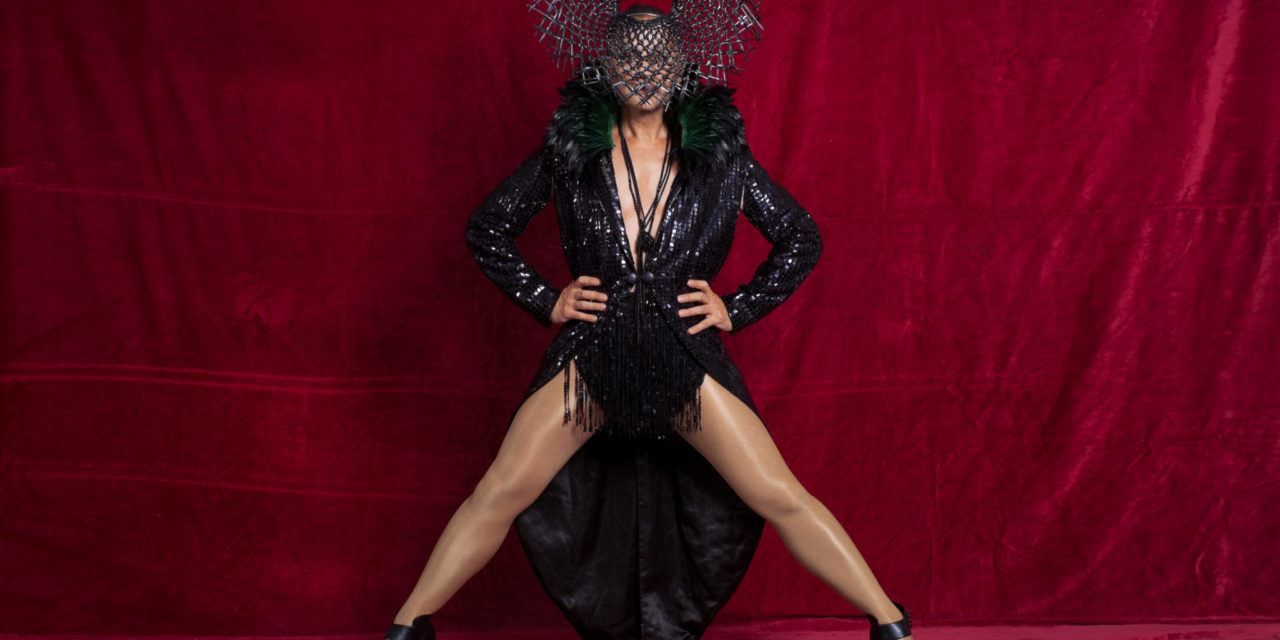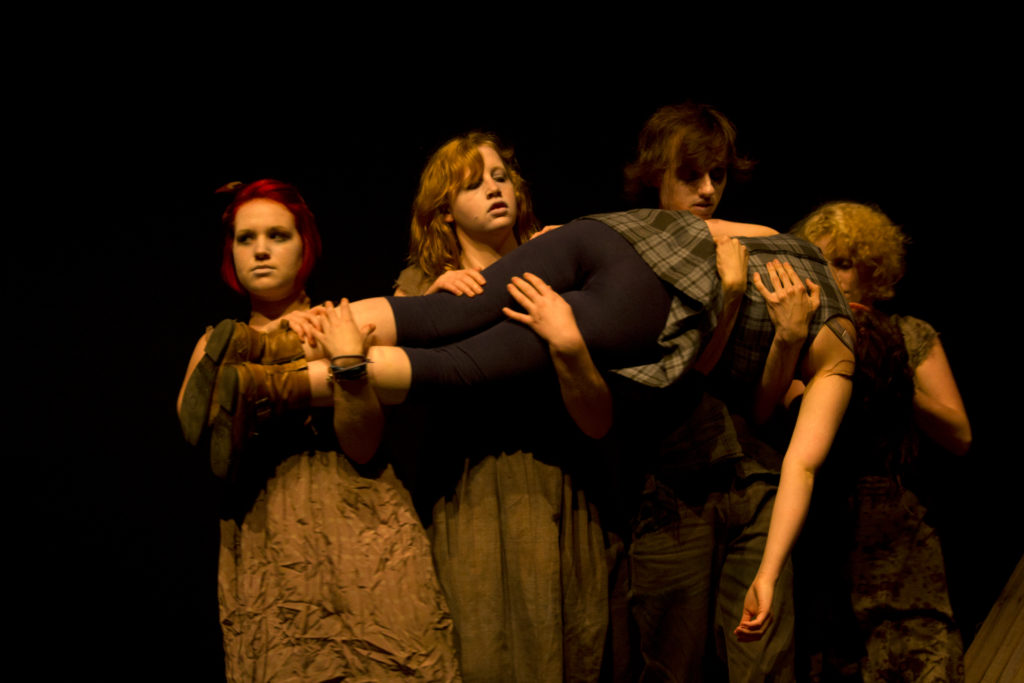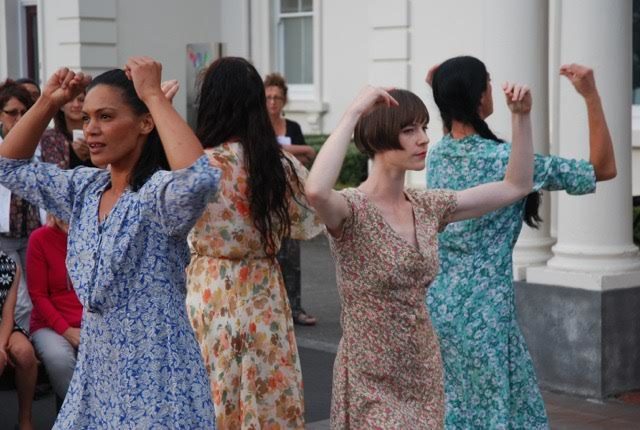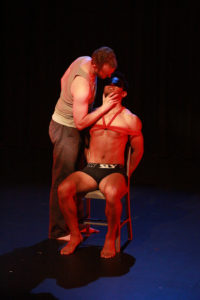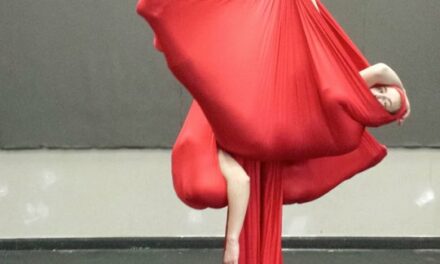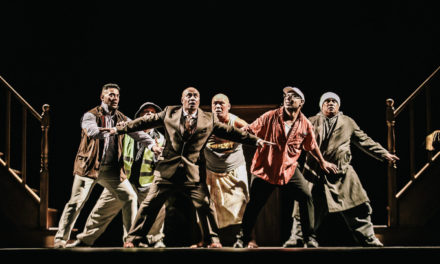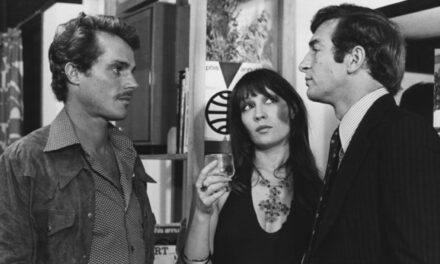This is Part II of the series on dramaturgy in New Zealand. For Part I, click here.
Dramaturgy is a shared process of learning. Here you will find the opinions, questions, challenges and observations of industry practitioners, creatives and performance academics; these are the voices of Aotearoa New Zealand on dramaturgy.
This is our korero. Join us.
In New Zealand, the proverbial playing field isn’t level. In fact, it’s a pretty steep slope for some of our teammates and the game certainly doesn’t get any easier. From being cast as a nameless terrorist to working closely on developing his own craft as a playwright and dramaturge, Ahi Karunaharan has experienced all sorts of criticism, and after almost two decades he isn’t shy of receiving unadulterated feedback. “The dramaturge becomes your best friend but is also your most dreaded critic,” he says. “That tension is a good one to have because it’s better to have harsh feedback given to you during the rehearsal than plastered all over a review.”
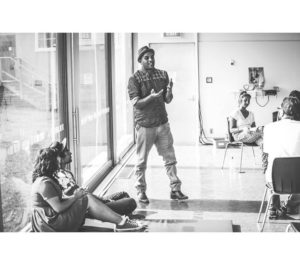
Ahi Karunaharan in rehearsal for The Mourning After, Photo credit Shovik Nandi
That doesn’t make it necessarily any easier. Honest feedback is often subjective and will depend on the invited dramaturge’s experience in theatre/dance/film-making/storytelling, their connections to the community and their knowledge of contextual factors such as history, politics, sociology and more. Sometimes, as Lemi Ponifasio, choreographer, and activist, says “it’s hard to say out loud, but when the work just isn’t good enough, it just isn’t good enough.”
Once said, however, the question then becomes: how do we address this?
Indeed, as our community kōrero highlighted, aside from endless cups of tea (or other forms of liquid refreshment) there are some pragmatic steps we could take towards developing a healthy conversation around dramaturgy.
Stuart Hoar, Playmarket script advisor, suggests one such step might be to acknowledge the conflict that arises in how different dramaturges conceptualize this practice. He believes there’s a lack of a coherent philosophy in dramaturgy, which means “it’s understood in different ways depending on circumstances – and as a result it’s often hit and miss.” Like other dramaturges, he’s clear we need to improve not only our ability to receive critical feedback, but also engage with how to provide dramaturgically sound advice that is useful, relevant and practical.
Other sources of tension arise when role expectations haven’t been solidified early in the process. Melbourne-based NZ director Geoff Pinfield argues that the cross-sector variation of a dramaturge’s contribution dilutes its efficiency and effort needs to be made to clarify clear indicators of success as well as intended outcomes. “When I’ve seen dramaturges credited in the independent sector, it’s often someone who’s turned up to a few rehearsals said ‘hmm and ahh’ and added their two cents, but they haven’t really been part of the creative process. That, to me, really curtails the utility of having such a role.” This frustration is seconded by Theatre of Auckland (TOA) director and founder Jason Te Kare, who points out that the process is further compromised when “more often than not the role of a dramaturge is lumped in with
“When I’ve seen dramaturges credited in the independent sector, it’s often someone who’s turned up to a few rehearsals said ‘hmm and ahh’ and added their two cents, but they haven’t really been part of the creative process. That, to me, really curtails the utility of having such a role.” This frustration is seconded by Theatre of Auckland (TOA) director and founder Jason Te Kare, who points out that the process is further compromised when “more often than not the role of a dramaturge is lumped in with role of director.”
It’s a messy state of affairs, but that doesn’t mean it has to stay that way. Dr. Murray Edmond, Dramaturge for Indian Ink and Associate Professor at the University of Auckland, adds that it’s crucial the functions of different roles are clear in order to be effective. “There are directorial functions, authorial functions and performance functions and these roles need to be respected. If a dramaturge can add something, then good. If not, then the dramaturge is not needed.”
Playwright and dramaturge Robin Kerr, is also adamant about the need to have clear responsibility, especially as dramaturges are often considered individuals who can provide a quick fix and a ‘spot of dramaturgy.’ “In a classic scripted process, the writer comes up with a structure and often the dramaturge comes in when much of the work is close to finished, and is expected to challenge that,” Kerr explains. “But the damage has been done, and the dramaturge has the unfortunate job of hoping to inject something of substance when in fact the initial premise may need to be completely re-worked.”
It became obvious when speaking to the community that the need for a cohesive understanding of dramaturgy is paramount to the success of this term in the theatrical lexicon of New Zealand. Lack of knowledge and skill, blurring of roles and the ‘quick and dirty’ version of dramaturgy are all factors that contribute to a lazy, if not ineffectual, dramaturgical process. However, once these sources of tension are acknowledged and addressed, it’s possible to construct healthy and proactive relationships. These relationships support not just creators, but the very alchemy of dramaturgy: storytelling.
Well, if only it were that easy.
One of the assets of a small industry is a penchant for swapping hats: a producer one day might moonlight as a director or playwright the next. This environment can create fertile opportunities for a rich and dynamic range of skills, but unfortunately the culture also readily lends itself to being moderated by gatekeepers and cliques. Outsiders invariably find themselves on the periphery and might form an alternative group, often out of necessity, rather than purpose.
As a radio producer and dramaturge Adam Macaulay explains, one of the primary reasons for this phenomenon is the lack of transparent and healthy relationships within the creative teams and wider community.
“There seem to be lots of situations, at least within major centers, where actors in rehearsal one week may be directed by someone who they themselves directed last week in a production that’s possibly written by a mutual friend. This can contribute to a careful social dynamic, a mixture of fear to criticize and assumptions about who understands what about the script and how best to realise its story on stage.”
Academic and choreographer Dr. Carol Brown explains that individual autonomy needs to be recognized. “The relationship between the director, dramaturge and the performers requires a space where healthy conversations can facilitate a shared value exchange – where the politics and architecture of relationships can be in a genuine conversation.”
Building this type of useful professional relationship also necessitates learning the art of communication, including the value of face-to-face encounters and efforts to recognize the individuals and their own story that they bring to the work. Playwright Renee Liang admits that choosing a dramaturge is very personal.
“You need someone who will make you feel safe enough to explore but also make sure you see the holes and inconsistencies for yourself,” she says. “In a culture where critical feedback is still largely shunned, it’s necessary to re-cultivate relationships to facilitate a larger cross-section of contributions.”
Gabrielle Vincent, programming and artist development manager at the Basement, is confident that these changes to develop better relationships have started. “We need to find our own voice in dramaturgy… while we have recognized dramaturges in this country like Gary Henderson, Stuart Hoar and Hone Kouka, we realize we need to continue sharing the knowledge and exploring different methods and bringing in different voices.”
But this is just the start of the change.
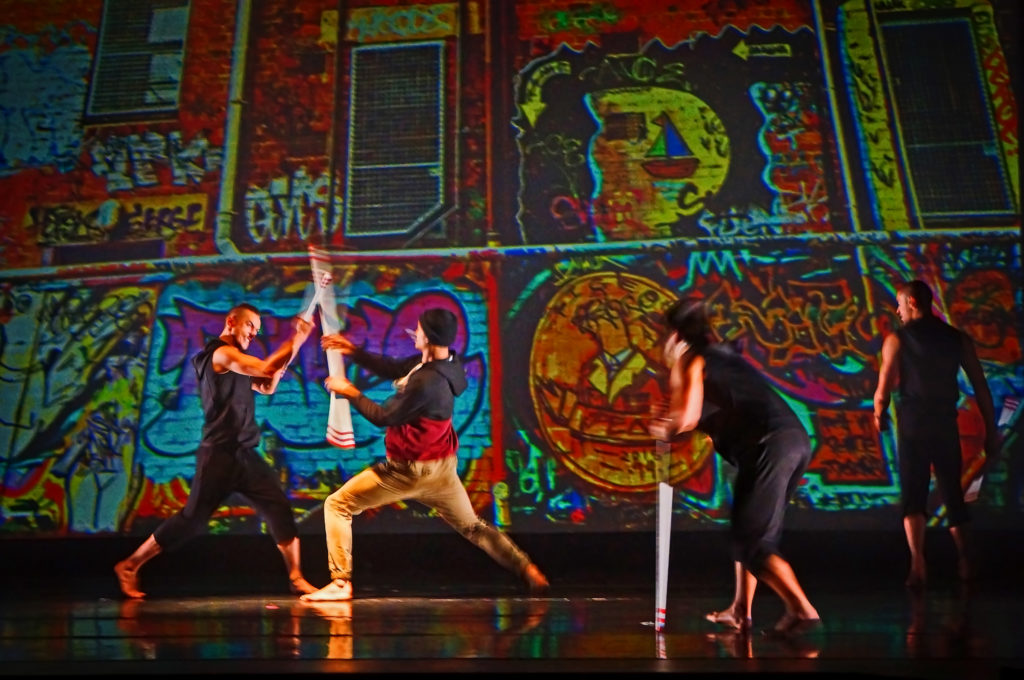
Tane. King of the Dubs Performers Aloalii Tapu: Matiu Hamuera, Mark Bonnington, Manuel Solomon. Photo courtesy of the artists
As veteran cabaret performer Mika Haka explains, more than just an infrastructural or hierarchical change is necessary. “When you do something Māori, anyone else (especially non-Māori) feel they can’t comment in a critical way. As a result, most Indigenous works at any festival never get a bad review – but then again, they never gets a great review either, and this is because the overwhelming majority of critics lack the language and the skill to comment at an engaged level on the work.”
Haka isn’t alone. There are numerous other theatre-makers and rapidly growing forums (for example, Asian Creatives Aotearoa and the Pasifika Theatre Makers) who have taken steps to address the inequity across the industry. There’s also an increasing recognition that strategic changes are necessary for both short-term gains as well as long-terms solutions, and the pronounced emphasis that the work must take into account the audience in ways that go beyond simply securing ‘bums on seats’ and ticking boxes to fulfil funding requirements.
Rob Mokaraka, playwright and actor, is another voice relentless in his passion to engage the audience in new ways. “Making theatre isn’t the same as making sushi,” he says. “It may be technically correct, brilliant even, but if it lacks the wairua and cultural nuances, how will it ever satisfy an audience?”
It may be a culinary metaphor but Mokaraka, known for taking time and effort to distil his script and production values, isn’t alone. Arnette Arapai, playwright and producer, is also committed to making efforts to disrupt the hegemony of the system that often, consciously or not, reiterates a particular model of what success looks like in New Zealand:
“The brand of Māori and Pasifika theatre is entirely constructed. We don’t call Roger Hall a palangi male playwright, but I’m a Pasifika female and that label comes with a number of expectations. Narratives of domestic violence? Stories of child abuse? What about obesity? Of course, those are the works that end up served on the mainstream table. These issues are important, it is essential they are addressed, but they still continue to dictate the content of our stories, how they should be told and sometimes, even how we are expected to feel.”
That, for some, is the model of theatrical success: a yardstick that ticks the checkbox of well-defined and rounded characters, clear dramatic arcs, crisp dialogue and pacing and complementing lighting, sound, and costume design. But as creatives have highlighted, there are a range of socio-cultural aesthetics that also need to be taken into account. Different stories have different histories. There’s no uniform mould that will produce ‘success’ as that in itself is subjective, but by taking the necessary steps to ensure that tensions are acknowledged and new relationships developed, change can be made. Reviews, in particular, have an important responsibility here. Proactive efforts and a willingness to engage with a range of different cultural contexts allow for an informed commentary to extend far beyond merely watching a work come to life in a black box. After all, the bigger the circle, the better the conversation.
Let’s be honest.
There isn’t a magic dictionary or an online course that suddenly provides cultural competency in the arts. There isn’t a fairy godmother/father/aunty/cuzzie that can sprinkle a few tons of twinkly cultural intelligence and there’s certainly no patrons on hand that will charge through patriarchal hierarchies or narrow-minded insecurities on your behalf. It’s not a world of M&Ms with a goofy tune and promises of good things in crayon colors. In fact, it’s sometimes a liberally bespattered twitterverse.
But that doesn’t mean it’s impossible to start a revolution.
Let’s return to one of the fundamental qualities of dramaturgy: talking to each other and being genuinely interested in having a thoughtful and meaningful korero. It was what guided these conversations, and it invokes a sense of collective commitment to a subject and process in which we all, at varying levels, engage. As choreographer and dancer Tanemahuta Gray says, “Dramaturgy offers a chance to korero, a chance to wananga, and that process allows an exploration of thematic ideas, as well as taking the work to a deeper level – and sometimes the process can be more meaningful than the final product.”
We can take certain steps to foster a culture of dramatic change. The first is to recognize the value we bring to the conversation on dramaturgy. At the 2014 international arts summit in Edinburgh, then-artistic director of the Edinburgh Festival Jonathan Mills called delegates from around the world to recognize that the currency in which we trade as artists is our culture. He spoke not just of diversity in regards to ethnicity, age, ability, gender or sexual orientation but of a culture of recognition and trust, where individuals and communities are empowered to tell their stories and are supported to share those stories with audiences everywhere. This is the dramaturgy we need to embrace. Later he also remarked that coming from the Southern hemisphere (he’s Aussie) we have a specific orientation to the world, a lens that we share as Pacific nations, and that’s a gift that we can use to take our work to new heights.
But it’s tricky.
Dramaturgy has the potential to be part of the new currency in which we trade. It’s a process that can offer insight and depth to any creative work and has proven to be an asset – but without taking risks, it’s not likely we’re going to head very far.
Taking risks is more than just an advertising campaign. It begins by making efforts to decolonize the current structures and knowing that different forces are at work alongside different, and occasionally competing, histories. It begins by taking stock of our place within the arts community in New Zealand and ensuring that all the elements of a healthy, rich culture can participate fully in developing a cultural ecology. It begins by establishing an environment where the value of dramaturgy is recognised, and a dramaturgical process is alive and healthy; and yes, it begins with this korero and knowing that dramaturgical exchange has the potential to create transformation – not a massive tectonic shift, but a change in the fuel that we use to fire our imagination and practice.
It also requires knowing that the past and present are already fleeting memories. The only way to engage with the lessons of the past and all the sources of knowledge and wisdom that have been collected and collated is to empower the community to see how dramaturgy is already making these changes. Nathan Joe, playwright and critic, is a young practitioner eager to see theatre generate discussion on how dramaturgy can be used to re-imagine the future of local creative works. “There is a tendency to emulate other mediums, and while it can result in more theatricality, it can also reduce theatre to the poor man’s simulation of cheap entertainment,” he says. “The dramaturge’s job is to remind the audience of the power and magnitude of inherent theatricality, and that’s the future of where our work needs to move.”
Dramaturgy in New Zealand isn’t new, but in 2016 it’s ready to be challenged, debated, questioned and included in the wider conversation. There is work to be done to refine our expectations of the role and the context in which our work is made; efforts required to value the already existing dramaturgical inputs that are made and in doing so, create structures that will extend their currency to create inclusive circles of creative collaboration. Finally, it is utterly essential that we recognize that it is our shared responsibility to be liberal in our thinking, generous in our support and tireless in our quest for excellence. This is, after all, our story and we get to tell it.
To move towards a New Zealand dramaturgy requires us as artists, and as an industry, to take action. In response to the collective insights of our community, we need a movement towards establishing dramaturgy as an essential component of our creative process.
So consider this an invitation.
Consider this a recommendation.
Consider this a guideline or even the Pirates’ Code.
Consider this what you will, but it’s our call to action.
The question is: are you ready to play the game?
POSTSCRIPT
Towards a New Zealand dramaturgy is an ongoing project. In 2015 thirty practitioners and creatives generously gave their name and I would like to acknowledge their contribution: Adam Macaulay, Ahi Karunaharan, Allison Horsley, Angela Green, Arnette Arapai, Carol Brown, Esther Roberts, Gabrielle Vincent, Gary Henderson, Geoff Pinfield, Jaime Dorner, Jason Te Kare, John Smythe, Justin Gregory, Karin Williams, Malia Johnston, Mika Haka, Murray Edmond, Nathan Joe, Pedro Ilgenfritz, Raewyn Whyte, Renee Liang, Rob Mokaraka, Robin Kerr, Sharon Mazer, Stuart Hoar, Tainui Tukiwaho, Tanemahuta Gray, Victoria Hunt and Waimihi Hotere. Our conversations were never less than half-an-hour and on a few occasions even extended to ninety minutes! The transcriptions of these kōrero came in at over 30,000 words and I would like to acknowledge that this essay in no way summarizes the vast diversity and richness of our conversation. There will be many more essays, reflections, and opportunities to continue this exchange. I would particularly like to thank Stuart Hoar from Playmarket and Sharon Mazer from AUT for their unstinting support and willingness to continually engage, debate and review my work; Matthew Harnett for his critical feedback and support; and finally, to my theatre wife, Nathan Joe, whose unflagging good humour and robust feedback has made sure that this iteration of Towards a New Zealand Dramaturgy has made it to the page.
This post was written by the author in their personal capacity.The opinions expressed in this article are the author’s own and do not reflect the view of The Theatre Times, their staff or collaborators.
This post was written by Dione Joseph.
The views expressed here belong to the author and do not necessarily reflect our views and opinions.

